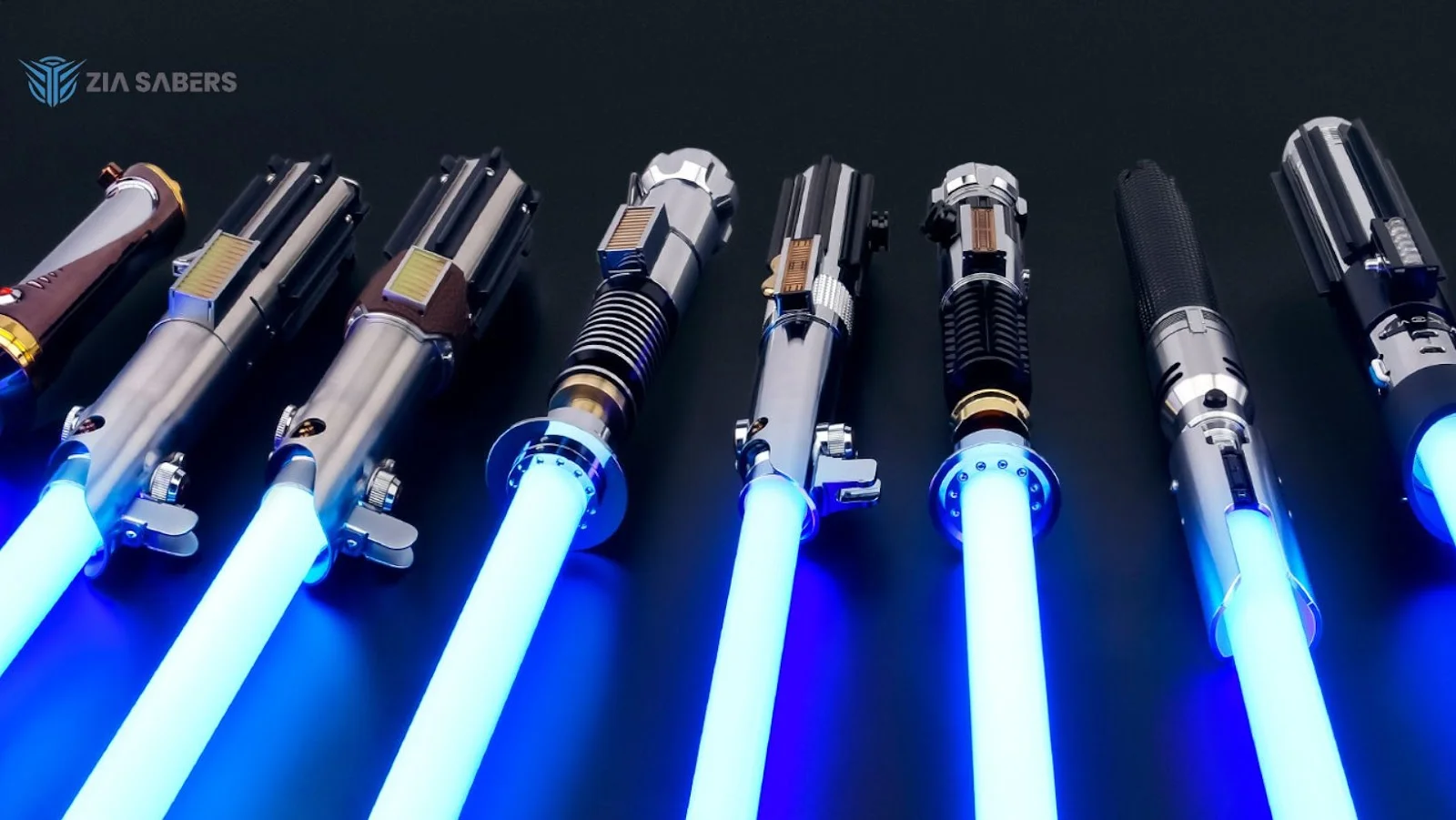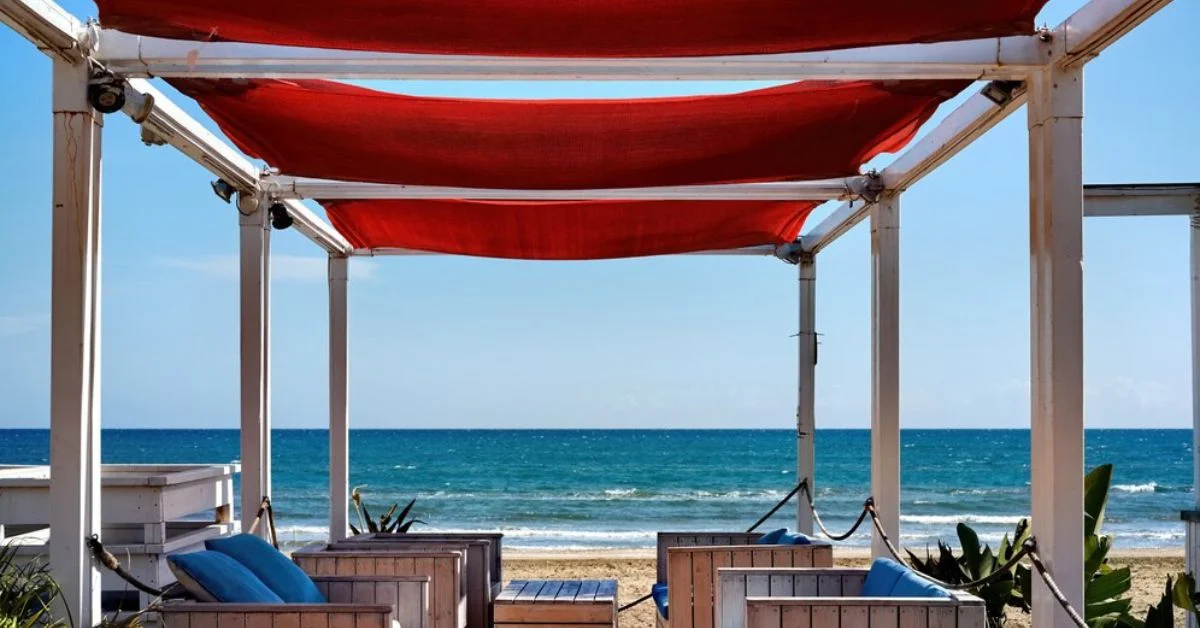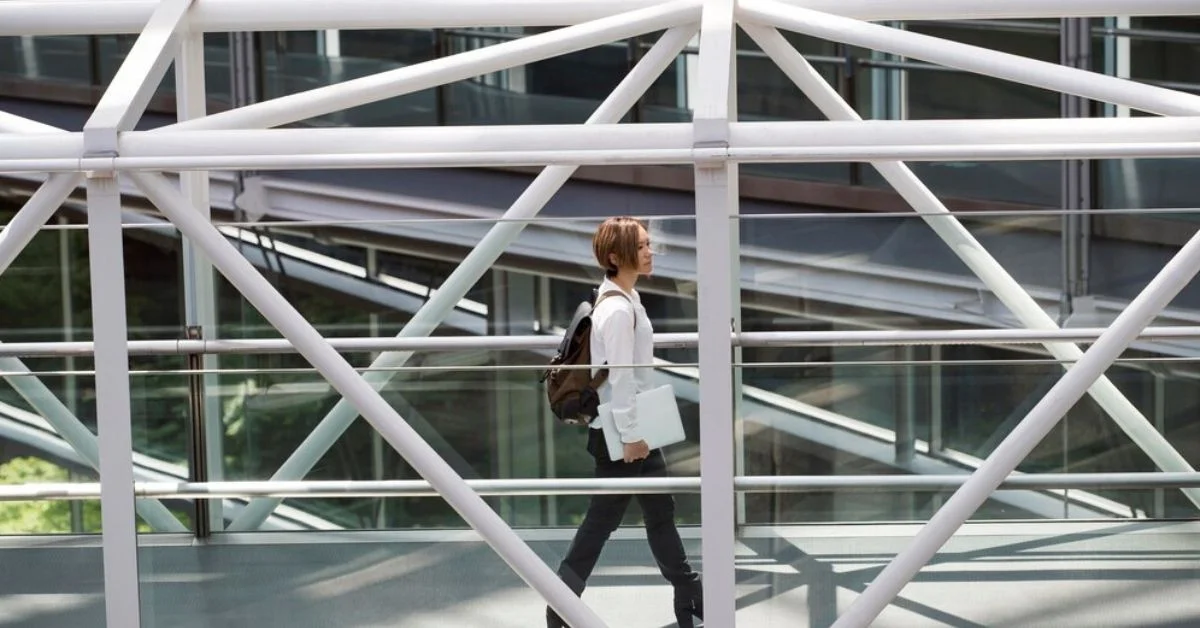GENERAL
Different Types of Lightsaber – Explained

An iconic weapon in the world of science fiction, Lightsaber comes in many forms, each with unique features of its own. The most common type is the single-edged lightsaber. This is a classic choice for many Jedi and Sith. It has a simple design with a shining blade. It’s easy to use and perfect for quick attacks.
But what about the double-bladed lightsaber? This species has two faces, one at each end of the stem. Perfect for those who need more power and influence. They are frequently used by Sith, such as Darth Maul. Double-bladed lightsabers are challenging to control but suitable for taking out most enemies.
There are other types, such as the Curved golden lightsaber. They are designed for better precision and control. This is the count Dooku loved. He also has crossed lightsabers with extra blades for protection. Kylo Ren is a famous character. Each lightsaber type has advantages depending on the user’s style and needs. Here are the top ten lightsaber types.
Standard Lightsaber
The standard lightsaber is a Jedi’s primary weapon, glowing with vibrant colors. It’s a laser sword that cuts through almost anything with ease. With a button push, it hums to life, ready for battle. The handle fits snugly in the hand, feeling powerful and balanced. Jedi Knights train for years to master its elegant moves. In a fight, it slashes, blocks, and parries with swift precision. The lightsaber’s beam extends, meeting enemies with crackling energy. Whether in duels or defending against blaster bolts, it’s their trusted ally. This iconic weapon embodies the Jedi’s commitment to peace and justice.
Double-Bladed Lightsaber
The double-bladed lightsaber is a weapon of awe and skill. It’s like two lightsabers in one, joined at the hilt. Each end glows with a vibrant blade when ignited, making it look intense and formidable. Jedi and Sith warriors master its unique handling for epic battles. Its design offers both offense and defense, a versatile choice. The wielder must be agile, using swift movements for attacks and blocks. It’s iconic, a symbol of power and balance in the galaxy. Fans of Star Wars movies adore its sleek and deadly appearance. Its distinct sound and style are a weapon, capturing imaginations.
Curved-Hilt Lightsaber
The Curved-Hilt Lightsaber is a unique weapon in the Jedi arsenal, and it is notable for its elegant design. Its unique curved handle provides users with a comfortable grip during intense battles. This bend is not just for beauty; It increases the sword’s agility in combat, allowing for quick and precise attacks.
Jedi Masters often choose the cranked lightsaber for its stability and flexibility. This curve helps increase the clash’s power and improve the sword’s defensive ability. Its stylish design goes beyond elegance, making it a practical choice for those looking for functionality and elegance in a gun. Whether deflecting blaster bolts or engaging in battle, this sword symbolizes Jedi wisdom and skill.
Shoto Lightsaber
The Shoto lightsaber is a shorter, sleeker version of the regular lightsaber. It’s like a mini lightsaber, perfect for close combat situations. This sword is about half the size of a standard sword and fits very well in the hand.
Ahsoka Tano Shoto Lightsaber is fast and agile in design, perfect for quick attacks. Jedi like Ahsoka Tano used intelligent weapons. He’s good for blocking, and he’s clean and fast. Its long length does not mean it is thin; it still packs a punch. It’s also easier to carry, making it a versatile option for Jedi on the go. A Shoto lightsaber is a unique weapon that combines functionality.
Dual-Phase Lightsaber
The Dual-Phase lightsaber is a weapon used by Jedi and Sith. It has a unique feature: the ability to extend the length of the blade during combat. This innovation provides excellent benefits in many cases. With simplification, biphasic light goes from standard size to multiple lengths. This versatility catches opponents off guard and improves the user’s fighting ability. Its flexibility makes it useful for Force users, ensuring they are always ready against attack.
Crossguard Lightsaber
Used by the Dark Warrior Kylo Ren, a Crossguard Lightsaber is like a regular lightsaber but with extra blades. These blades stick out from the sides, near the hilt. They look like tiny secondary lightsabers, giving a unique design. This style is famous for its ancient look and powerful appearance. The extra blades aren’t just for show—they serve a purpose. They help in guarding the wielder’s hands during combat. This feature adds a layer of protection and style to the weapon. Many Jedi and Sith wielders prefer this design for its practicality. It’s both a weapon and a shield, making battles more intense and exciting. Whether for defense or offense, the Crossguard Lightsaber stands out in the galaxy far, far away.
Lightship
The Lightwhip is a weapon in the Star Wars universe, a unique and elegant weapon. It looks like a regular lightsaber but has a flexible and elastic blade. It dances and explodes with energy during the wave, dazzling everyone who sees it.
Imagine a bright light that spins and spins with every movement. It’s not just a weapon; It’s a show. Military intelligence uses it to carry out precise attacks and demonstrate combat capabilities. The Ring of Light is nothing to take lightly, adding beauty and style to any battle in a galaxy far, far away.
Lightsaber Pike
The Lightsaber Pike is a unique weapon in the Star Wars universe. It’s like a combo of a lightsaber and a staff. Jedi Temple Guards often wielded these in pairs. It’s a long weapon with a lightsaber blade at one end. This helps keep enemies at a distance. The design allows for precise strikes. The wielder has both offense and defense. It’s a versatile tool in battles. With its extended reach, it surprises foes. The Lightsaber Pike requires Jedi-like skill. It’s not just about swinging it around. Mastery needs training and discipline.
DarkSaber
The DarkSaber is a legendary weapon in Star Wars. It’s a black-bladed lightsaber, sleek and deadly. This saber has a unique history, passing through many hands. Tarre Vizsla, the first Mandalorian Jedi, created it. It symbolizes leadership among Mandalorians, a sign of power. Possessing the DarkSaber means ruling Mandalore’s people. But, owning it isn’t just about strength, but honor too. The sabers passed down, often through battles or duels. Its distinct black blade stands out in any fight. Whoever wields it gains respect and fear from others. For Mandalorians, it’s a symbol of their heritage and might.
Light Club
“Light Club” is where we gather to chase away darkness. It’s a place of glowing smiles and shimmering laughter. In this club, we bask in the warmth of positivity and sparkles of hope.
Here, we share stories that light up our souls. We dance to the rhythm of joy, letting worries fade. It’s a sanctuary where every heart finds its luminescence. Join us under the radiant beams of happiness where shadows dare not tread. This club isn’t just about light; it’s about illuminating each other’s lives with love and brightness.
Conclusion
In conclusion, lightsaber types offer unique styles for every Jedi. From single blades to dual-wielding, each choice reflects a Jedi’s path. Whether it’s the elegant grace of Form II or the fierce power of Form V, there’s a saber for every preference. The variety allows Jedi to specialize in combat or versatility. No matter the choice, the lightsaber symbolizes the Jedi Order’s strength. With these weapons, Jedi defend peace and justice across the galaxy. So, whether it’s a classic hilt or an exotic design, the lightsaber is a timeless icon of the Force.
FAQs
Q. What is a lightsaber type?
A. lightsaber type refers to the design and characteristics of a Jedi’s weapon.
Q. How many lightsaber types are there?
A. There are several lightsaber types, each with unique styles and functionalities.
Q. What is a curved-hilt lightsaber?
A. A curved-hilt lightsaber has a hilt that curves for unique handling.
Q. What is a training lightsaber?
A. A training lightsaber is a safer, often non-lethal version for practice.
Q. What is a crossguard lightsaber?
A. A crossguard lightsaber has additional blades on the hilt for protection.
GENERAL
The Charm of Singing Waiters for Memorable Wedding Celebrations

Singing waiters for weddings infuse your special day with an unparalleled charm, elevating the ambiance to pure magic. These exceptional performers seamlessly blend into the catering staff, surprising and delighting guests with their extraordinary vocal talents. Let’s delve into the enchanting world of singing waiters and discover why they’re the ultimate addition to your wedding celebration.
Experience the Elegance of Live Entertainment
Imagine the awe on your guests’ faces as they are serenaded by professional singers disguised as waiters. This unique form of live entertainment adds a touch of sophistication and class to your wedding festivities. From romantic ballads to upbeat tunes, singing waiters effortlessly set the mood, creating memorable moments that will be cherished for years to come.
Create Memorable Moments with Surprise Performances
One of the most delightful aspects of singing waiters is the element of surprise they bring to your event. Guests are taken aback when their servers suddenly burst into song, turning an ordinary dining experience into an extraordinary performance. Whether it’s during cocktail hour, dinner service, or dessert, these talented singers know exactly when to captivate your audience with their stellar vocals.
Personalize Your Playlist for a Bespoke Experience
With singing waiters, you have the flexibility to customize your musical repertoire to suit your taste and preferences. Whether you’re a fan of classic love songs, contemporary hits, or Broadway show tunes, you can curate a playlist that reflects your unique style as a couple. From the first dance to the grand finale, every song is carefully selected to enhance the romance and joy of your special day.
Enhance the Atmosphere with Professional Talent
Unlike traditional wedding entertainment, singing waiters offer a dynamic and interactive experience that engages guests on a deeper level. With their professional training and stage presence, these performers know how to command attention and create a vibrant atmosphere that keeps everyone entertained. Whether they’re serenading the newlyweds or encouraging guests to join in on the fun, singings waiters bring an energy and excitement that is simply irresistible.
Leave a Lasting Impression on Your Guests
Your wedding day is a reflection of your love story, and every detail should be thoughtfully curated to leave a lasting impression on your guests. By incorporating singing waiters into your celebration, you’re not only adding a unique and memorable touch, but you’re also creating an experience that will be talked about long after the last dance. From the heartfelt performances to the joyous reactions of your loved ones, singings waiters ensure that your wedding is truly unforgettable.
Conclusion
Singing waiters for weddings offer a magical blend of live entertainment, surprise performances, and personalized charm that elevate your special day to new heights. With their exceptional talent and dynamic presence, these performers create unforgettable moments that will be cherished by you and your guests for a lifetime. So why settle for the ordinary when you can experience the extraordinary? Make your wedding truly unforgettable with the enchanting allure of singings waiters.
FAQs
What exactly are singing waiters?
Singings waiters are professional performers who disguise themselves as waitstaff at weddings and other events. They seamlessly blend into the catering team and surprise guests with unexpected vocal performances throughout the event.
How do singing waiters enhance the wedding experience?
Singings waiters add a unique and memorable element to weddings by providing live entertainment that is both surprising and delightful. Their performances elevate the atmosphere, creating magical moments that guests will always remember.
Can I choose the songs for the singing waiters to perform?
Yes, one of the advantages of hiring singings waiters is the ability to personalize the playlist to suit your preferences. Whether you prefer romantic ballads, upbeat tunes, or a mix of genres, you can work with the performers to create a bespoke musical experience for your wedding.
When and where do singing waiters typically perform during the wedding?
Singing waiters can perform at various points throughout the wedding, including during cocktail hour, dinner service, or dessert. Their performances are strategically timed to surprise and entertain guests at key moments during the celebration.
How do I ensure a seamless integration of singing waiters into my wedding plans?
To ensure a seamless integration of singings waiters into your wedding plans, it’s essential to communicate with your event planner or catering coordinator. Provide them with the necessary information about the performers and discuss any specific requests or preferences you may have regarding their performance schedule and repertoire. This will help ensure that the singings waiters complement your wedding vision and enhance the overall guest experience.
GENERAL
Covered Comfort: Crafting Custom Awning Manufacturing for Your Outdoor Oasis

Introduction to Awning Manufacturing
Awning manufacturer is a meticulous process that involves crafting protective coverings for windows, doors, patios, and outdoor spaces. These structures not only offer shade and protection from the elements but also enhance the aesthetic appeal of buildings and outdoor areas. In this article, we’ll delve into the world of awning manufacturing, exploring the various types, materials used, the manufacturing process, benefits, challenges, and future trends.
Types of Awnings
Retractable Awnings
Retractable awnings are versatile structures that can be extended or retracted as needed. They are ideal for both residential and commercial settings, offering flexibility and convenience.
Fixed Awnings
Fixed awnings are permanently attached to a building or structure, providing continuous protection from sun, rain, and other weather conditions. They are popular for their durability and stability.
Freestanding Awnings
Freestanding awnings are standalone structures that can be placed anywhere in outdoor spaces such as gardens, patios, or poolside areas. They offer shade and shelter without the need for attachment to a building.
Materials Used in Awning Manufacturing
Awnings are crafted from a variety of materials, each offering unique properties and benefits.
Fabric
Fabric awnings are commonly made from materials such as canvas, acrylic, or polyester. These fabrics are durable, weather-resistant, and come in a wide range of colors and patterns to suit different preferences.
Metal
Metal awnings, typically made from aluminum or steel, are known for their strength and longevity. They are highly resistant to corrosion and can withstand harsh weather conditions.
Plastic
Plastic awnings, often constructed from materials like PVC or polycarbonate, are lightweight and easy to maintain. They are also available in various styles and colors, making them a popular choice for modern designs.
The Process of Awning Manufacturing
The manufacturing process of awnings involves several stages, from designing to installation.
Designing
The first step in awning manufacturing is designing. This involves creating detailed plans and specifications based on the client’s requirements and the intended use of the awning.
Fabrication
Once the design is finalized, the fabrication process begins. This includes cutting, sewing, and assembling the various components of the awning, such as the frame, fabric, and hardware.
Installation
The final stage is the installation of the awning. This requires careful positioning and mounting to ensure proper functionality and stability.
Key Considerations in Awning Manufacturing
When manufacturing awnings, several factors need to be taken into account to ensure quality and customer satisfaction.
Durability
Durability is crucial for awnings to withstand exposure to sun, wind, rain, and other environmental factors. High-quality materials and construction techniques are essential for long-lasting performance.
Aesthetic Appeal
Awnings play a significant role in enhancing the visual appeal of buildings and outdoor spaces. Choosing the right design, fabric, and color can greatly contribute to the overall aesthetic of a property.
Functionality
Functionality is another important consideration in awning manufacturing. Awnings should be easy to operate, provide adequate shade and protection, and complement the architectural style of the building.
Benefits of Choosing a Reputable Awning Manufacturer
Opting for a reputable awning manufacturer offers several advantages, including:
- High-quality craftsmanship
- Customization options
- Professional installation services
- Warranty coverage and after-sales support
Factors to Consider When Choosing an Awning Manufacturer
When selecting an awning manufacturer, it’s essential to consider the following factors:
Experience
Choose a manufacturer with extensive experience in the industry and a proven track record of delivering quality products and services.
Reputation
Research the manufacturer’s reputation by reading customer reviews, testimonials, and checking their credentials and certifications.
Customer Service
Excellent customer service is crucial for a positive experience. Look for manufacturers who prioritize customer satisfaction and offer responsive support throughout the purchasing process.
Trends in Awning Manufacturing
As technology and design trends evolve, so do awning manufacturing techniques. Some emerging trends in the industry include:
- Motorized awnings with remote control functionality
- Smart awnings equipped with sensors for automatic operation
- Sustainable materials and eco-friendly designs
Sustainability in Awning Manufacturing
With growing concerns about environmental conservation, sustainability has become a key focus in awning manufacturing.
Eco-friendly Materials
Many manufacturers are transitioning to eco-friendly materials such as recycled fabrics, sustainable woods, and low-impact production processes to reduce their environmental footprint.
Energy Efficiency
Energy-efficient awnings, designed to minimize heat gain and reduce cooling costs, are gaining popularity among environmentally conscious consumers.
Challenges Faced by Awning Manufacturers
Despite the benefits and advancements in awning manufacturing, manufacturers face several challenges, including:
- Intense competition in the market
- Rising material and labor costs
- Meeting changing regulatory requirements and standards
The Future of Awning Manufacturing
The future of awning manufacturing looks promising, with continued innovation and advancements in technology, design, and sustainability.
Conclusion
Awning manufacturing is a dynamic industry that plays a vital role in enhancing the functionality and aesthetics of residential and commercial properties. By understanding the different types, materials, processes, and considerations involved, consumers can make informed decisions when choosing awnings for their spaces.
FAQs
How long does it take to manufacture an awning?
- The manufacturing timeline can vary depending on factors such as the complexity of the design, availability of materials, and the manufacturer’s workload. On average, it may take anywhere from a few days to a few weeks to complete the manufacturing process.
Can awnings be customized to fit specific dimensions?
- Yes, most awning manufacturers offer customization options to tailor the size, shape, and design of the awning to the client’s specifications.
What maintenance is required for awnings?
- Regular maintenance, such as cleaning the fabric and inspecting the hardware for any signs of wear or damage, is recommended to prolong the lifespan of awnings. Specific maintenance requirements may vary depending on the type of awning and its exposure to environmental elements.
Are awnings suitable for all weather conditions?
- While awnings provide protection from sun, rain, and mild wind, they may not be suitable for extreme weather conditions such as hurricanes or heavy snowfall. It’s essential to consider the climate and location when installing awnings and to take appropriate precautions to ensure their durability and safety.
Can awning fabric be replaced if damaged?
- Yes, in most cases, awning fabric can be replaced if it becomes damaged or worn out over time. Many manufacturers offer replacement fabric options, allowing customers to refresh the appearance of their awnings without replacing the entire structure.
GENERAL
The Versatility of Retractable Structures: Enhancing Spaces with Flexibility

Retractable structures have revolutionized the way we design and utilize spaces, offering flexibility, and functionality like never before. From retractable roofs to movable walls, these innovative architectural elements have become increasingly popular across various industries. In this article, we delve into the world of retractable structures, exploring their history, benefits, applications, and future trends.
History of Retractable Structures
Retractable structures have a rich history dating back centuries. One of the earliest examples dates back to ancient Roman times, where amphitheaters were equipped with retractable awnings to provide shade during events. Over the years, advancements in technology and engineering have led to the development of more sophisticated retractable systems.
Types of Retractable Structures
Retractable Roofs
Retractable roofs are perhaps the most common type of retractable structure, commonly found in sports stadiums and outdoor venues. These roofs can open and close, allowing for natural ventilation and exposure to the elements when desired.
Retractable Walls
Retractable walls offer the flexibility to transform indoor spaces seamlessly. Whether it’s dividing a large area into smaller sections or opening up a room to the outdoors, retractable walls provide versatility in design and functionality.
Retractable Floors
Retractable floors, although less common, are gaining popularity in residential and commercial settings. These floors can be raised or lowered to create multi-functional spaces, such as swimming pools that can be covered and converted into dance floors or event spaces.
Benefits of Retractable Structures
Flexibility and Versatility
One of the primary benefits of retractable structures is their ability to adapt to changing needs and environments. Whether it’s accommodating different weather conditions or transitioning between indoor and outdoor spaces, retractables structures offer unmatched flexibility.
Energy Efficiency
Retractable structures can enhance energy efficiency by maximizing natural light and ventilation. By opening up spaces to the outdoors, buildings can reduce reliance on artificial lighting and HVAC systems, leading to potential cost savings and environmental benefits.
Enhanced Aesthetics
In addition to their functional benefits, retractable structures can enhance the aesthetics of a space. Whether it’s showcasing architectural design or creating a unique ambiance, retractable elements add visual interest and sophistication to any environment.
Applications of Retractable Structures
Sports Venues
Retractable roofs have become a staple feature in modern sports stadiums, allowing events to take place rain or shine. These roofs provide spectators with a comfortable viewing experience while maintaining the integrity of the game.
Residential Spaces
In residential settings, retractable structures offer homeowners the opportunity to maximize outdoor living spaces. Whether it’s creating a seamless transition between indoor and outdoor areas or providing shade and protection from the elements, retractables structures add value and functionality to homes.
Commercial Buildings
From restaurants and cafes to retail stores and event venues, retractables structures are transforming the way commercial spaces are designed and utilized. These structures enable businesses to create dynamic and inviting environments that cater to diverse needs and preferences.
Considerations When Implementing Retractable Structures
While retractable structures offer numerous benefits, there are several factors to consider when implementing them:
Cost
The cost of installing and maintaining retractables structures can vary depending on factors such as size, materials, and complexity. It’s essential to weigh the upfront investment against the long-term benefits and consider the potential return on investment.
Maintenance
Retractables structures require regular maintenance to ensure optimal performance and longevity. This may include inspections, lubrication, and repairs as needed. Proper maintenance can help prevent costly issues and prolong the life of the structure.
Durability
Durability is another crucial factor to consider when choosing retractables structures. High-quality materials and construction methods are essential to withstand exposure to the elements and frequent operation. Investing in durable materials and professional installation can help ensure the longevity and reliability of the structure.
Future Trends in Retractable Structures
As technology continues to advance, we can expect to see exciting innovations in retractable structures. From enhanced automation and remote control capabilities to sustainable materials and energy-efficient design, the future of retractables structures is bright and promising.
Conclusion
Retractable structures have transformed the way we design and experience spaces, offering unparalleled flexibility, functionality, and aesthetic appeal. Whether it’s creating dynamic sports venues, versatile residential spaces, or innovative commercial buildings, retractables structures continue to push the boundaries of architectural design and engineering.
FAQs
1. Are retractable structures suitable for all climates?
Retractables structures can be designed to withstand various weather conditions, making them suitable for a wide range of climates. However, factors such as wind, snow, and extreme temperatures may affect their performance and durability.
2. Can retractables structures be retrofitted into existing buildings?
Yes, retractables structures can often be retrofitted into existing buildings with careful planning and design. However, the feasibility of retrofitting will depend on factors such as structural integrity, space availability, and budget constraints.
3. How long do retractables structures typically last?
The lifespan of retractables structures can vary depending on factors such as materials, usage, and maintenance. With proper care and maintenance, high-quality retractables structures can last for decades.
4. Are retractables structures energy-efficient?
Retractables structures can enhance energy efficiency by maximizing natural light and ventilation. By reducing reliance on artificial lighting and HVAC systems, retractables structures can help lower energy consumption and operating costs.
5. Can retractable structures be customized to fit specific design requirements?
Yes, retractables structures can be customized to fit specific design requirements, including size, shape, and functionality. Whether it’s creating a unique architectural feature or maximizing space utilization, retractables structures offer endless possibilities for customization.

 TECHNOLOGY4 months ago
TECHNOLOGY4 months agoBlog Arcy Art: Where Architecture Meets Art

 ENTERTAINMENT1 week ago
ENTERTAINMENT1 week agoExploring the Kristen Archives: A Treasure Trove of Erotica and More

 ENTERTAINMENT4 days ago
ENTERTAINMENT4 days agoKiss KH: The Streaming Platform Redefining Digital Engagement and Cultural Currents

 LIFESTYLE4 months ago
LIFESTYLE4 months agoThe Disciplinary Wives Club: Spanking for Love, Not Punishment

 LIFESTYLE1 week ago
LIFESTYLE1 week agoWho Is Sandra Orlow?

 GENERAL4 months ago
GENERAL4 months agoWhat are stories of male chastity? A Comprehensive Guide

 EDUCATION4 days ago
EDUCATION4 days agoLingrohub Platform: A Complete Student Access Guide

 ENTERTAINMENT4 weeks ago
ENTERTAINMENT4 weeks agoMonkeyGG2: Your Personal Gaming Hub










